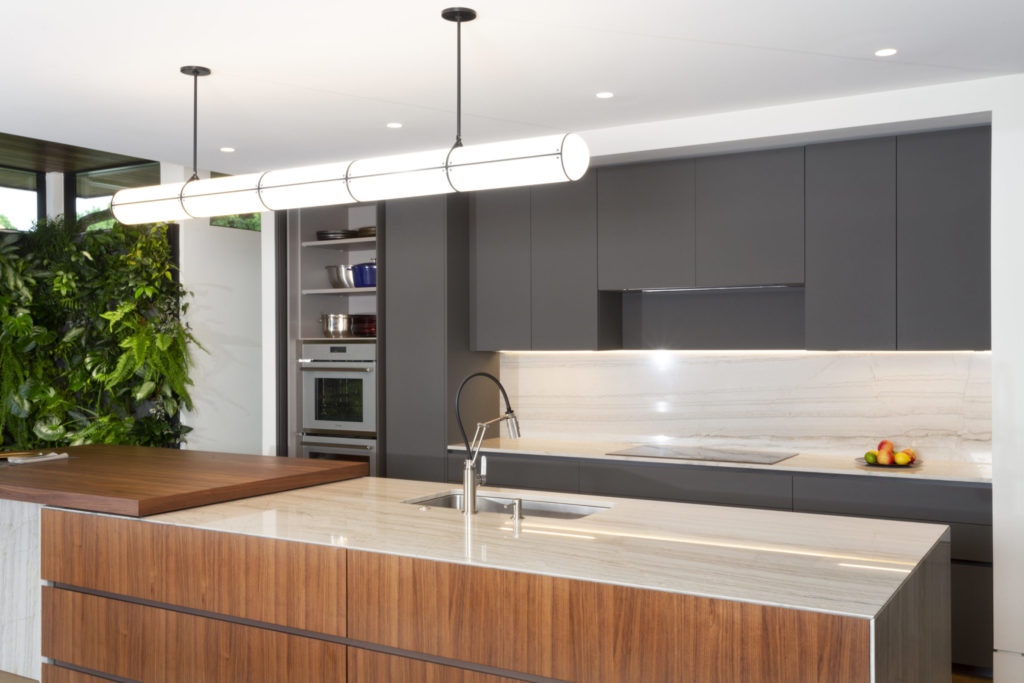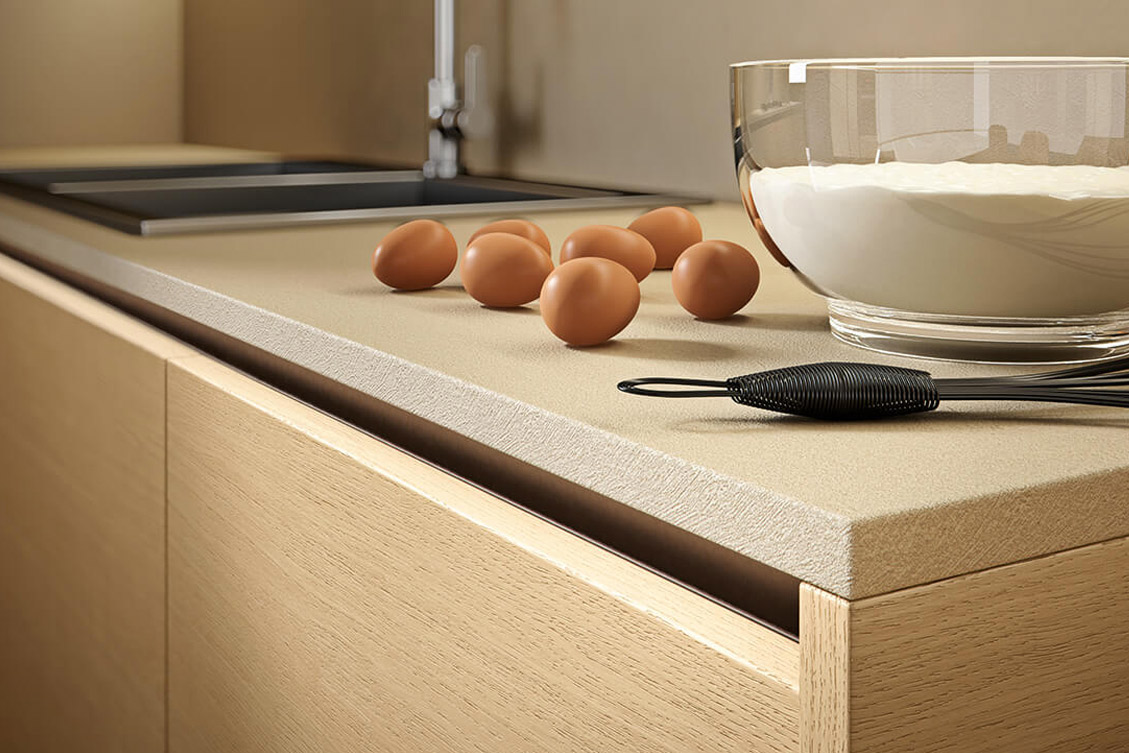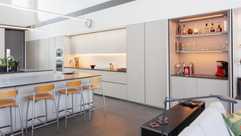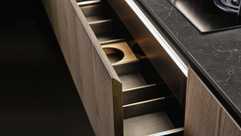When it comes to European vs. American homes, there are almost too many differences to count. (Don’t get us started on the great air conditioner debate!) But today we wanted to focus on one room in particular: the kitchen. In the U.S., traditional kitchen styling is all the rage. Just think of an American kitchen and you’ll already know the style – highly decorative with lots of visual noise and mixed materials. European kitchens, however, prefer a more modern approach. And if you haven’t guessed it already, so do we here at NOLI.
So what are modern vs. traditional kitchens and why does Europe prefer one over the other? Let’s start with the basics…
The Traditional Kitchen


As you can see, traditional kitchens have a lot going on. This style favors a high level of visual embellishment and decorative accessories. These traditional kitchens lean into the use of hardware and shaker door-style cabinets so that every inch feels ornamented.

From the use of crown molding to flashy backsplashes, these kitchens have a maximalist style and have been all the rage in the U.S. for at least the past thirty years.
And that’s great! Everyone should have a home that fits their taste and personal style – especially in a space as vital as the family kitchen.
But if you’re looking to do things a little differently, let us introduce you to…
The Modern Italian Kitchen

Modern kitchens, especially those inspired by Italian kitchen design, are in many ways the opposite of traditional kitchens. They’re sleek, use simple color pallets, and focus on creating a more meditative space for the eye. You’ll notice modern kitchens have minimal hardware, preferring slab door cabinets that are frameless with a recessed handle grip – or no grip at all!

The modern kitchen style is all about providing a more peaceful environment for its inhabitants. In this world, people and food are the action and decor comes second. The owner is then able to show pops of personality with personal touches like artwork, enabling the pieces to really stand out.

Why NOLI For Your Modern Italian Kitchen?
Convinced the modern kitchen is right for you? Then your next step is to work with the experts. That’s us. Sure, you can try to get a traditional kitchen specialist to design a modern kitchen for you, but pivoting from modern to traditional design is not as easy as you think. Thanks to our Italian background and our decades of expertise, NOLI has the specialized knowledge in modern design necessary to deliver quality to our clients.
Frequently Asked Questions
What makes a modern kitchen look expensive?
High-quality materials, clean lines, and a cohesive design all contribute to an expensive look. In modern Italian kitchens, features like handleless cabinets, premium appliances, and luxurious countertops (such as sintered stone or quartz) can elevate the overall appearance. Thoughtful lighting design and a clutter-free environment also add to a high-end aesthetic.
Can you put a modern kitchen in a traditional house?
Absolutely! Mixing modern and traditional styles can create a unique and interesting living space. When incorporating a modern kitchen into a traditional home, it’s important to create a harmonious transition between spaces. This can be achieved through color choices, material selection, and carefully chosen design elements that bridge the gap between old and new.
What are the colors of an Italian kitchen?
Modern Italian kitchens often feature a minimalist and nature-inspired color palette. Tonal grays are popular choices for a sleek, contemporary look. However, bold accent colors like red or yellow can be incorporated for a pop of personality. Natural wood tones are also common, adding warmth to the space.
What are the disadvantages of a traditional kitchen?
Traditional kitchens, while charming, come with several disadvantages. They often require more maintenance due to ornate details and multiple materials. Their style can quickly look dated, and the decorative elements may inefficiently use space that could be better utilized for storage. Traditional kitchens tend to have darker colors and complex designs, potentially making the space feel smaller and poorly lit. They’re also less flexible in terms of layout modifications. From a cost perspective, detailed craftsmanship and ornate materials can be more expensive. Additionally, the tendency towards decorative items can lead to a cluttered appearance, and older appliances commonly found in traditional kitchens may be less energy-efficient than their modern counterparts. In contrast, modern Italian kitchens address many of these issues with their sleek designs, efficient use of space, and focus on functionality without compromising style.
Want to learn more? Check out our portfolio and get in touch for your next modern kitchen design project.
Alla prossima!


